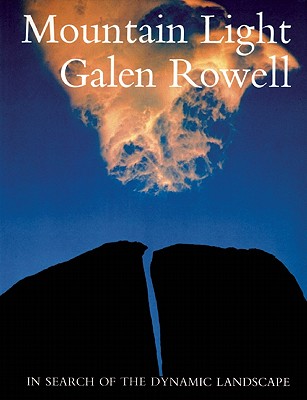Galen Rowell was an inspirational photographer, adventurer and mountain climber who tragically died in a plane crash in 2002. His book ‘Mountain Light’ recounts his life’s adventures and photographic development while providing inspiration and instruction for the aspiring landscape photographer along the way.
was an inspirational photographer, adventurer and mountain climber who tragically died in a plane crash in 2002. His book ‘Mountain Light’ recounts his life’s adventures and photographic development while providing inspiration and instruction for the aspiring landscape photographer along the way.
Early in the text, Rowell identifies the elements of a great photograph: technical proficiency, fine light and an identifiable personal vision. While photography is a highly technical form of art, technique is quite easily learned and most new photographers with an acceptable grasp of the basics can start making competent photos. On another level, an unforgettable photograph has many less tangible artistic qualities, and it is these aspects Rowell focuses on.
The 224 page book is structured in seven chapters alternating with eight photographic exhibits. The chapters are a pure text collection of Rowell’s photographic philosophies and musings. The early chapters describe Rowell’s childhood; his early love of the outdoors and mountain climbing, and humble beginnings in photography with a box camera all of which set the foundations for his life’s work. Over the course of the book he takes us through significant events that have shaped his personal vision. This enables the reader to reflect on their own photographic processes and make some inroads into the difficult task of translating intuitive vision into deliberate practice. It’s very intriguing, but takes a while to get through as it can be heavy going at some points.
Far from being self-indulgent with over-analysis and rambling prose, Rowell takes the reader on a journey infused with his spirit of adventure and passion for the outdoors. As he describes his image making processes there are many practical tips about effective composition and light. Despite placing less significance on equipment, he also acknowledges that it is important to many photographers, and one chapter which follows him on assignment for National Geographic is dedicated to this.
Interspersed with the chapters are a series of photo exhibits. In a nod to the importance of fine light, Rowell has arranged the exhibits by the quality of light they were taken in, such as magic hour, back light, soft light and night. Each exhibit contains several of his famous photos with an accompanying essay which describes the history of the subject, and gives insight into his inspiration, vision and the image making process. Many photographers only shoot landscapes at sunrise or sunset – and while this light is certainly spectacular, rigidly placing limits can only also limit creativity. Rowell demonstrates how to take advantage of any lighting situation by understanding its strengths and limitations.
The first edition was published in 1986 so a lot of the technical details are film-specific, and you won’t find any tips on post processing in photoshop.
In summary, I highly recommend this book to anyone with an interest in outdoor photography who is keen to develop their personal vision beyond gear and technique. It goes beyond the basics of exposure and the rule-of-thirds to explore some of the subtleties of vision and light. In addition to being a collection of amazing photographs, the lessons learned are timeless and one can take more from every read-through.
Click here to search for the best price on booko
Have a landscape photography book to recommend? Post a comment below.
Leave a Reply